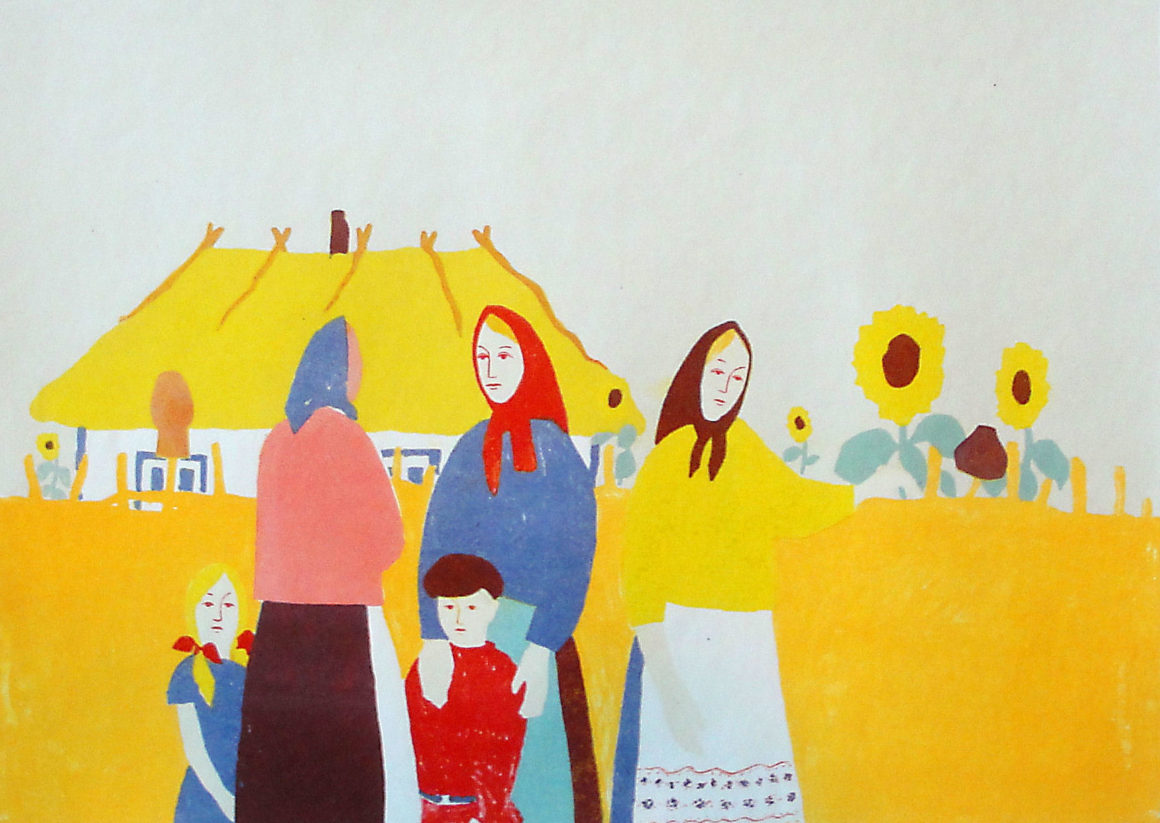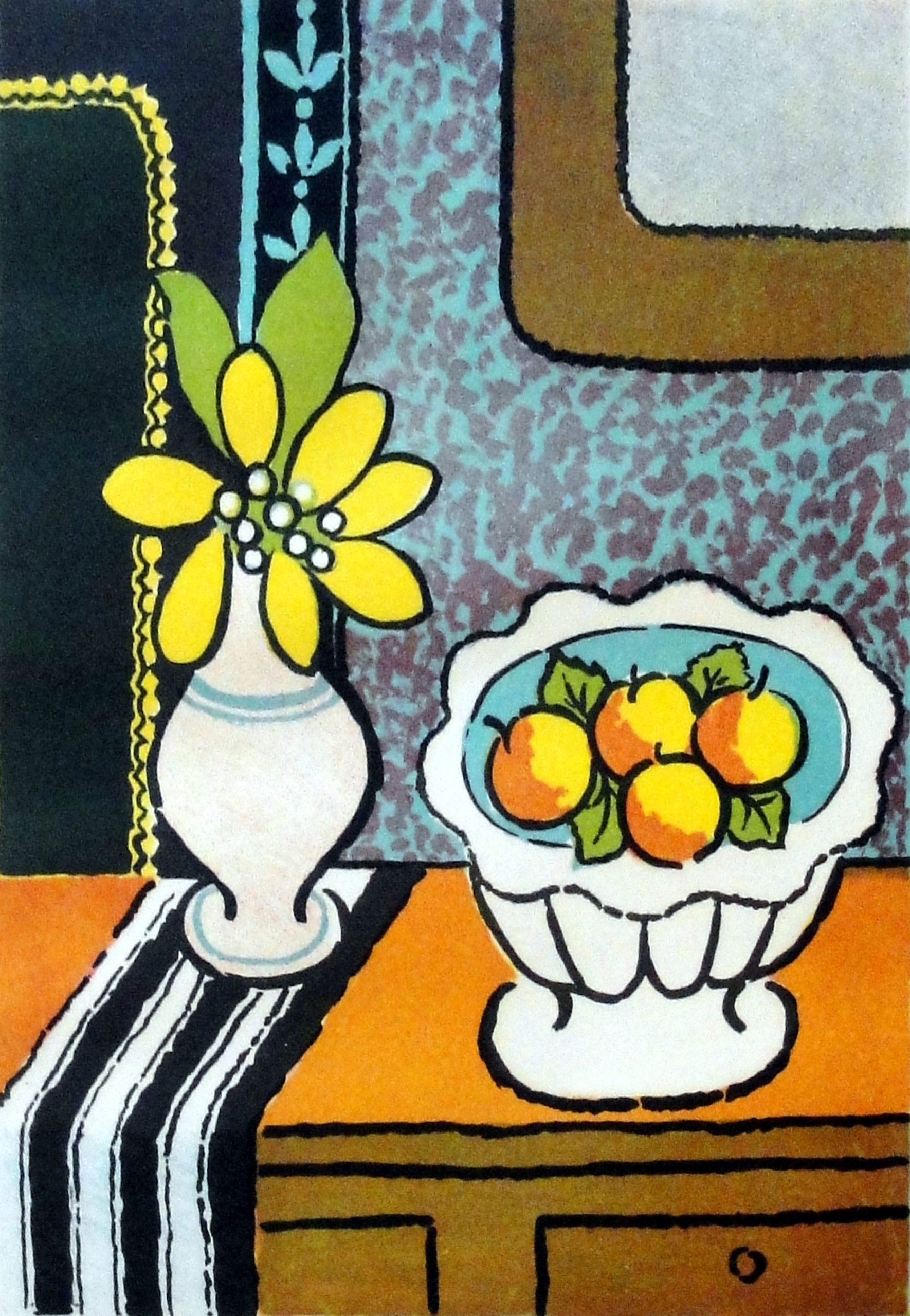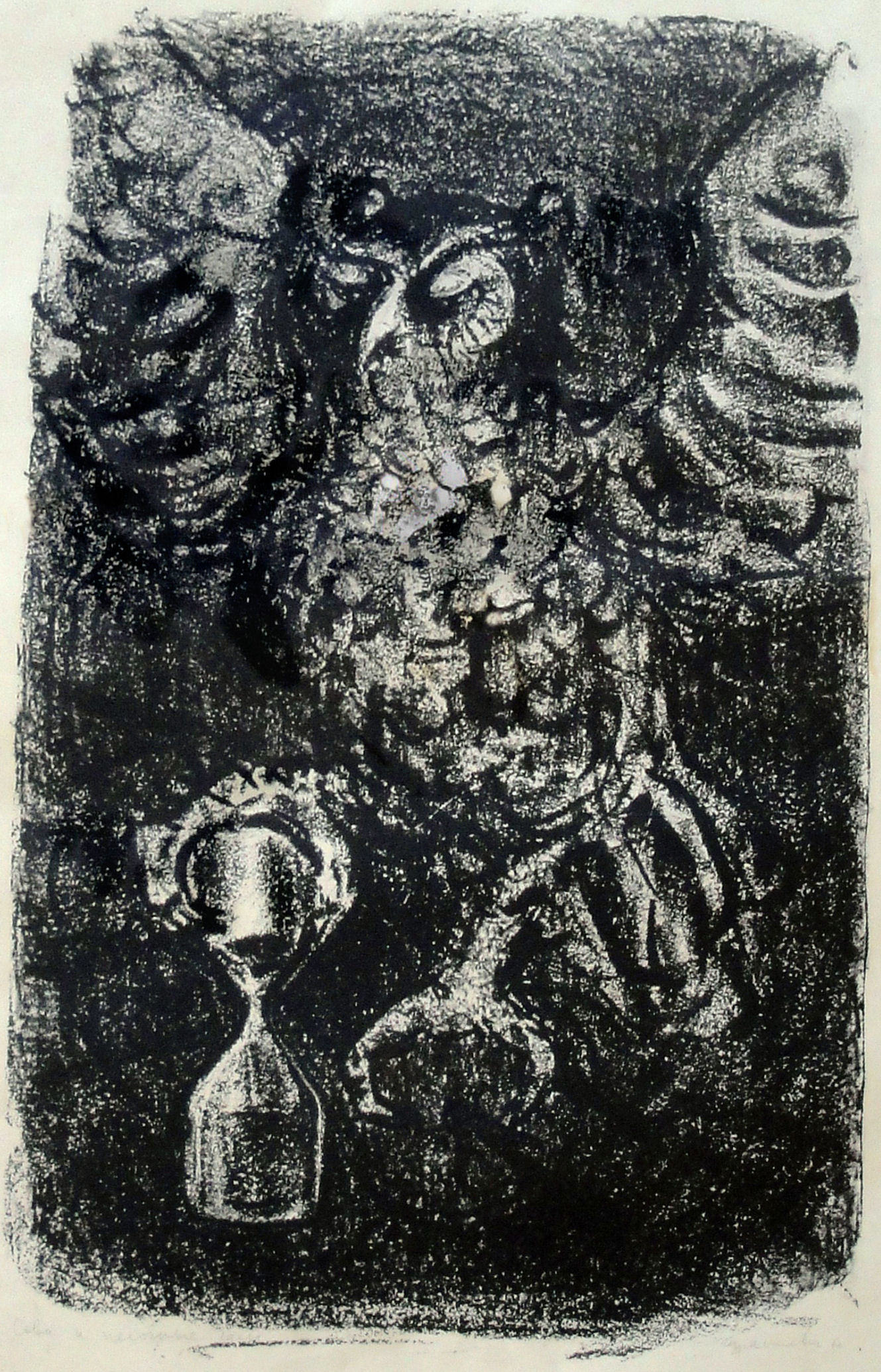
18 May Lithography in Leningrad: Soviet Graphic Arts in the 1950s and 60s
On view May 18—August 17, 2014
Click here to read the catalogue online
This exhibition, Lithography in Leningrad: Soviet Graphic Arts in the 1950s and 60s, features 37 lithographs created by nine official artists at the state-run Leningrad Experimental Graphics Workshop in the Soviet Union in the late 1950s and early 60s. The lithographic medium was first used in Russia in the 1810s, but had been invented in Germany around 1796. A mechanized process, lithography allowed for the economical production of prints as well as other commercial uses, such as advertising. The lithographs featured in this exhibition exemplify a period in the Leningrad Workshop when artists sought to create prints that resembled drawings and watercolors that were soft and modulated in tone.
Among the Workshop artists, Alexander Vedernikov (Russian, 1898-1975) was particularly successful in achieving this aesthetic. His colorful, patterned still lifes reflect the influence of Matisse and the Fauves. Alexandra Yacobson’s (Russian, 1903-1966) Russian folktale illustrations and Gerda Nemenova’s (Russian, b. Germany, 1905-1986) minimalist portraits capture the graphic gesture of drawing, with their delicate, linear qualities.

Alexander Vedernikov (Russian, 1898-1975), Still Life with Striped Scarf, 1960, lithograph, 24 ½ x 18 3/8 in., The Art Collection at The Hebrew Home at Riverdale
The subjects of the artists in the Leningrad Workshop ranged widely. Boris Ermolaev (Russian, 1903-1982), for example, was a successful painter who drew heavily on the traditions of folk art and icon painting. One of his lithographs, Mothers (1961), rendered in vibrant colors and emphasizing flattened, linear shapes, most strongly exemplifies the conventions of Socialist Realism in its idealized depiction of workers on collective farms. Other works in the show, however, focus on more foreboding subjects, such as a series by Gregory Israelevich (Russian, 1924-1999) depicting owls that symbolize the passing of time and mortality.

Gregory Israelevich (Russian,1924-1999), Owl and Hourglass, 1960, lithograph, 24 3/8 x 19 ¼ in., The Art Collection at The Hebrew Home at Riverdale
Many of these artists were first shown in the West in a groundbreaking exhibition entitled Lithographs by Twenty-Seven Soviet Artists held at the Grosvenor Gallery in London in the spring of 1961. The gallery was founded in the previous year by Eric Estorick (1913-1993), and his wife, Salome (1920-1989), who later became best known as collectors of Italian Futurism. Estorick was born in New York City in 1913, his family having emigrated from Russia to the United States in 1905 to escape anti-Semitism. He became a political writer and lecturer in sociology at New York University before settling in London. Lithographs by Twenty-Seven Soviet Artists was one of the earliest exhibitions of Soviet art held at Estorick’s gallery—a niche that he would continue to champion through many exhibitions for the next several decades. The show was so well received in Britain that the exhibition traveled to New York City later the same year. Many of the prints on view in the current exhibition were included in that show and later acquired for the Hebrew Home Art Collection.
![]() This exhibition is supported, in part, by public funds from the New York City Department of Cultural Affairs in partnership with the City Council.
This exhibition is supported, in part, by public funds from the New York City Department of Cultural Affairs in partnership with the City Council.
Featured image: Boris Ermolaev (Russian, 1903-1982), Mothers, 1961, lithograph, 24 ¾ x 18 ½ in., The Art Collection at The Hebrew Home at Riverdale

